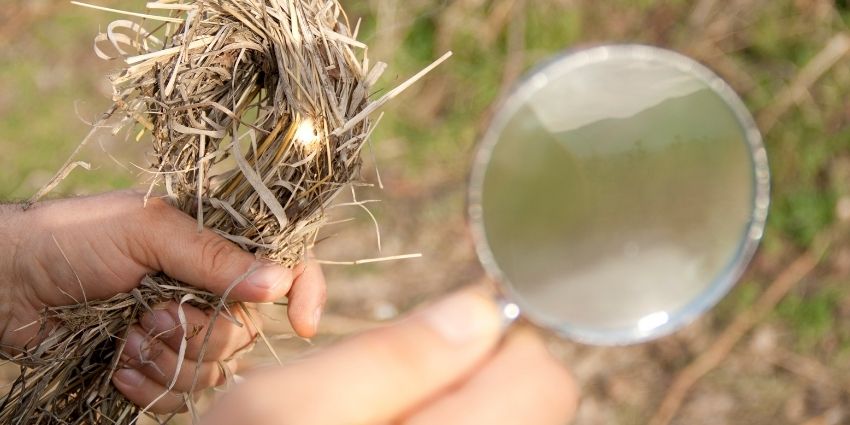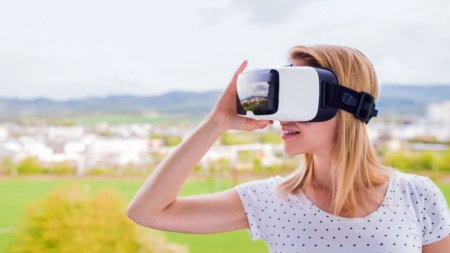5 Reasons You Can’t Use Your VR Headset Outside (And How To Overcome Them)
Note: I do not necessarily recommend that you attempt to use your VR headset outside. You probably shouldn’t.
When I got my Oculus Quest 2, it seemed like the perfect thing to take outdoors. But, virtually all headset manufacturers strongly recommend against doing that. So I wrote this post to explain why they advise against it and how to overcome the problems you’ll experience if you go outside.
1) The Lenses on Your VR Headset Can Damage (Melt) The Screen
You should be careful to avoid letting your headset’s lenses come into direct contact with sunlight. The lenses can magnify the Sun’s rays and permanently damage the screen inside the device. Just how “melty” the lenses are depends on the manufacturer’s lens-type. Still, I wouldn’t go around testing which lenses will melt their screen the fastest.

It can effectively ruin your VR headset, and it’s probably not covered under warranty. This may be the #1 reason manufacturers don’t want you to take the device outdoors. That said, simply don’t let your headset’s lenses come into direct contact with the sun and you should be pretty safe from this pitfall.
2) Tracking Won’t Perform Well in Direct Sunlight (or Darkness)
I wrote an entire post about fixing tracking issues with the Oculus Quest 2 (which renders your Guardian/hand tracking useless). The gist is that the headset uses its four cameras to set up the guardian/tracking system. And the cameras do not function well in very bright or dark conditions.
You might be able to get the tracking working outdoors if you were in a very shady area, tried it on an overcast day, or at dusk/dawn. But, direct sunlight is definitely not the optimal environment for the tracking system. And they don’t exactly make ND Filters for the Quest’s 4 tracking cameras.
If you went outdoors at night, you’d have the opposite problem of needing to bring lights into the environment. The tracking cameras struggle in the dark as well.
3) Risk of Serious Personal Injury via Tripping
While there’s nothing like a good VR personal injury story, we probably shouldn’t seek them out.
You probably don’t think about how easy it is to trip in a yard. It can easily be caused by small changes in elevation, stumbling upon a small hole, a tree root, the neighbor’s dog, etc. And in VR, you’re effectively blindfolded when you fall (and slight elevation change in your yard can give a false perception of where the actual ground is).
You can seriously injure yourself this way! I once broke my leg in college simply by tripping on some ice and falling awkwardly. Elderly people die by falling (a lot).
If I were attempting this (and this isn’t an endorsement), I’d want to do it somewhere that I was confident the ground was perfectly flat. But, this starts to limit your options as you’ll also want overhead shade, and a place that you’re unlikely to trip or misjudge elevation.
4) Wifi Access / Needing to Be Tethered to a Computer
Suppose you’re still using a PCVR headset. In that case, going outside becomes dramatically more complicated as you’ll need to bring your laptop with you. In my opinion, taking it outdoors makes no sense if you’re in this camp.
I see the appeal of using a wireless headset outdoors (like the Quest 2). But, you’ll need to get a decent Internet connection for it to work. Meaning you’ll either need to be in the range of a wifi router. Or, use your cellphone as a wifi hotspot.
The problem with using your iPhone as a wifi hotspot is that it may not be a fast enough Internet connection depending on where you are.
5) Device Overheating
I haven’t heard many stories of people’s Quest 2’s overheating. That said, I haven’t heard many stories of people taking their Quest 2’s outside on a 100-degree day either. The fans in these devices probably couldn’t keep the device cool enough if exposed to direct sunlight on a hot day.
In addition to the processor, the cameras on the outside of the device could have some real trouble with head particularly if they’re exposed to direct sunlight. The battery inside the device won’t love extreme temperatures. And you could have some issues with lens fog while playing.


